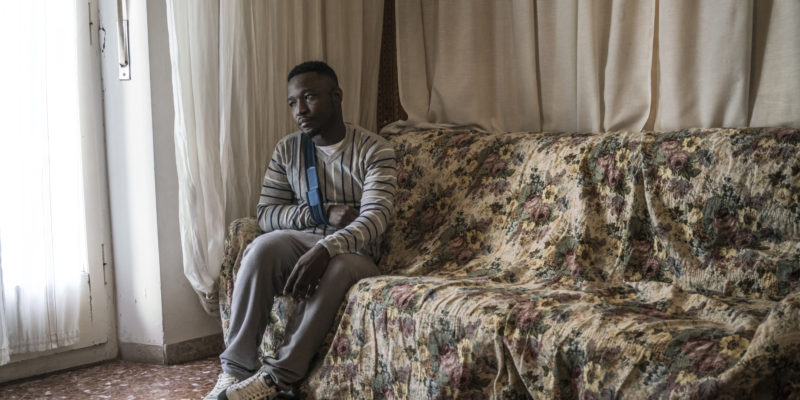1. France National Court of Asylum goes on strike to protest new government rules
The French National Court of Asylum has gone on strike to protest the “repressive logic” of new government measures that would restrict access to asylum application; according to the letter penned by the judges, the new measures would also raise the limit of administrative detention from 45 to 90 days.
2. How the European press covered the march against racism in Macerata
The European press has been following the march against racism that was held in Macerata on February 10, with thousands of people protesting the attack on migrants by Luca Traini. The headline of French newspaper Le Parisien went “Italy: thousands of antifascist protesters march in Macerata“. The march was further covered in France by Le Monde and L’Express. According to German newspapers Der Spiegel and Die Zeit, despite the mayor’s fear of increased tensions in his town – thousands of protesters have once again said no to racism. Lisbon’s Diário de Notícias reports thousands of people marching against fascism in Macerata, a week after the shooting spree that left six injured.
3. More racist violence in Italy, gunshots fired on a migrant centre in Sicily
The debate on racist violence is raging in the aftermath of the attack in Macerata. The hot takes are now followed by the analyses. “Failure to see humanity in “others” is the end of empathy and the beginning of hate,” says philosopher Laura Boella to Avvenire, drawing a parallel between today’s refugees and Hannah Arendt’s “non-people”. Alfredo Di Giovampaolo of RaiNews 24 has travelled Italy to investigate the roots of hatred. Meanwhile, despite the outraged over the shooting in Macerata, anti-migrant violence is still alive. In Pietraperzia, Sicily, unknown gunmen have fired shots on the windows of a migrant centre where twenty young refugees had just been taken in.
4. The shooting in Macerata, told by the victims
While we now know almost everything about the Macerata gunman, Luca Traini, the same cannot be said of his six victims: Wilson Kofi, Omar Fadera, Jennifer Odion, Gideon Azeke, Mahamadou Toure, and Festus Oagbon. Their names are very much all we know. Their stories, too often neglected by the press, deserved to be known: al Jazeera was able to meet with some of them at the Macerata hospital, soon before it was closed to the media. Open Migration’s Marta Cosentino spoke to Kofi Wilson, a young Ghanaian man who was hit in the shoulder during the shooting.
5. Migrants perish in Libya truck accident
As IOM Libya has reported, on February 14, a truck used by smugglers to move groups of migrants crashed, leaving 19 people dead. Read the report here. Meanwhile, thousands of people from the town of Tawergha are being barred from returning home by armed groups in Misrata.
6. Facts and thoughts on migration, two months into 2018
What are the real data on the latest arrivals of migrants by boat? An article in Il Post explains the contradictory statements from the Italian government and the border control agency Frontex. The Guardian published an article on the ineffectiveness of foreign aids in curbing migration. Is it still true that economic support for low-income countries stops people leaving to seek a better life? What are the risks of funding key countries along the migrant routs? Europe wants to slow migration from Niger, but could wind up destabilizing an entire region in the process, writes the Atlantic. What about the recently opened humanitarian corridors from Libya? According to Paolo Naso of the Federation of Evangelical Churches in Italy: “The Italian ecumenical experiment has been a success, but the EU is not doing enough”. Meanwhile, Libyan smugglers are getting rich dealing in migrant lives. Also read this article on migration management in Sicily and migration as an electoral concern, and a study by the European Union Agency for Fundamental Rights on the impact of migration on local communities.
7. Few migrants returned to Turkey under the 2016 deal with the EU
The EU-Turkey deal on migrants might have acted more as a deterrent than as a system. According to figures from the IOM, close to 30,000 people arrived by boat to the Greek Islands from Turkey last year, compared to 173,000 in 2016; the vast majority of them hasn’t been returned to Turkey, as was demanded under the 2016 agreement.
8. Tunisia’s irregular migration surge
Driven mostly by the economic crisis, many Tunisians are crowding the beaches in the attempt to reach Europe. Giulia Bertoluzzi had met with judges, scholars, fishermen and other survivors of the October 8 shipwreck, and had written about them for Open Migration.
9. Seeking asylum in the UK is no laughing matter. Or is it?
“Who were Jesus’s earthly parents?”, “Do you know the names of any famous Greek philosophers who were humanistic?” Because of absurd interview questions like these, many asylum seekers from all around the world see their applications refused by the Home Office. Meanwhile, the UK plans a video campaign to deter African migrants. However, research has shown that previous campaigns to deter irregular migration, from Australia to Denmark, have only had a limited effect.
10. From the US bases to the Balkan route: the story of Ahmad and Mati
Ahmad and Mati served the US military as interpreters during the war in Afghanistan. Now their lives are threatened by the Taliban, and upon being denied visas to emigrate to the USA, they joined migrants heading for western Europe only to find themselves trapped in Serbia on the wrong side of impenetrable borders.
Foto di copertina di Emanuele Satolli









